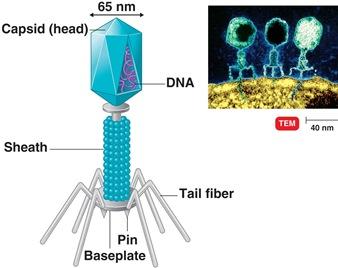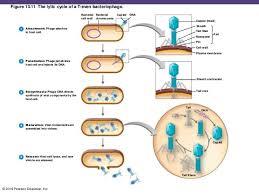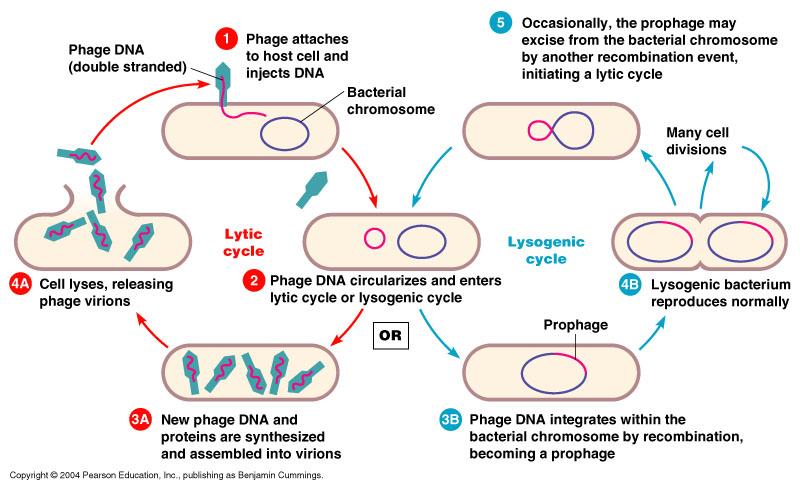Instructions for Side by Side Printing
- Print the notecards
- Fold each page in half along the solid vertical line
- Cut out the notecards by cutting along each horizontal dotted line
- Optional: Glue, tape or staple the ends of each notecard together
Viruses, viroids, and prions
front 1 Viruses possess genetic material comprised of | back 1 DNA or RNA |
front 2 A double-stranded, enveloped DNA virus that contains reverse transcriptase belongs to which family | back 2 hepadnaviridae |
front 3 which of these processes of viral multiplication is most likely to damage the host cell? | back 3 release of viruses |
front 4 members of adenoviridae cause | back 4 the common cold |
front 5 which of the following are possible strategies for treating viral infection | back 5 blocking viral attachment to host cell receptors blocking uncoating of the viruse after entry blocking insertion of viral DNA into the host cell chromosomes blocking biosynthesis of viral nucleic acids ALL THE ABOVE |
front 6 which method cannot be used to culture viruses in a lab | back 6 nutrient agar culture media |
front 7 cell lines derived from transformed (cancerous) cells are called | back 7 continuous cell lines |
front 8 an example of a latent virus infection is | back 8 shingles |
front 9 during the bacteriophage lysogenic cycle | back 9 phage DNA is inserted into the host chromosome |
front 10 a virus may contain any of any of the following except | back 10 ribosomes |
front 11 after the attachment and entry of a virus into a host cell, what is the next step in the multiplication of animal viruses | back 11 uncoating |
front 12 viruses that use RNA as a template for transcribing DNA include | back 12 retroviridae |
front 13 in polio virus replication, the function of the antisense (-strand) RNA is to | back 13 serve as a template for the production of sense (+strand) RNA |
front 14 which of the following statements about spikes is false | back 14 they are used for penetration |
front 15 all of the following are RNA viruses except | back 15 hepatitis B virus |
front 16 which of the following is NOT used as a criterion to classify viruses | back 16 biochemical tests |
front 17 which of the following statements provides the most significant support for the idea that viruses are nonliving chemicals | back 17 they cannot reproduce themselves outside host |
front 18 which of the following is NOT a method of culturing viruses | back 18 in culture media |
front 19 bacteriophages and animal viruses do NOT differ significantly in which one of the following steps | back 19 biosynthesis |
front 20 a clear area against a confluent "lawn" of bacteria is called a | back 20 plaque |
front 21 the definition of lysogeny is | back 21 phage DNA is incorporated into host cell DNA |
front 22 continuous cell lines differ from primary cell lines in taht | back 22 continuous cell lines can be maintained through an indefinite number of generations |
front 23 a viroid is | back 23 a nonenveloped, infectious piece of RNA |
front 24 a persistent infection is an infection in which | back 24 the disease process occurs gradually over a long period |
front 25 which of the following would be the first step in biosynthesis of a virus with a -strand of RNA | back 25 synthesis of double-stranded RNA from an RNA template |
front 26 the most common route of accidental AIDS transmission of health care workers is | back 26 needlestick |
front 27 an infectious protein is a | back 27 prion |
front 28 some viruses, such as human herpesvirus 1 infect a cell without causing symptoms; these are called | back 28 latent viruses |
front 29 an enveloped is acquired during which of the following steps | back 29 release |
front 30 the following steps occur during multiplication of retroviruses. what is the fourth step | back 30 synthesis of double-stranded DNA |
front 31 viruses are considered obligatory intracellular parasites because | back 31 they require a host cell in order to multiply |
front 32 characteristics of viruses | back 32 contain either DNA or RNA contain protein coat multiply inside living cells causes specialized structures to transfer nucleic acids to other cells lack enzymes for protein synthesis and ATP generation |
front 33 define host range | back 33 the spectrum of host cells the virus can infect |
front 34 what is a bacteriophage | back 34  viruses that infect bacteria |
front 35 an infectious viral particle composed of nucleic acid and surrounded by a protein coat is | back 35 a virion |
front 36 caspid | back 36 protein coat which protects the nucleic acid of a virus |
front 37 capsomeres | back 37 protein subunits caspids are composed of |
front 38 helical viruses | back 38 long rods, may be rigid of flexible ebola and rabies |
front 39 polyhedral | back 39 many-sized viruses |
front 40 enveloped viruses | back 40 roughly spherical. caspid is covered by an envelop influenza virus |
front 41 complex virus | back 41 complicated structure bacteriophage |
front 42 nonenveloped virus | back 42 caspid aren't covered by an envelope |
front 43 taxonomy of viruses | back 43 virus - genus names viridae - family names |
front 44 viral species | back 44 viruses sharing the same genetic info and ecological niche |
front 45 plaques | back 45 number of clearings |
front 46 Plaque-forming units | back 46 concentrations of viral suspensions measured by the number of plaques |
front 47 where do they grow animal viruses in the lab | back 47 in living animals in embryonated eggs in cell cultures |
front 48 cell deterioration is known as | back 48 cytopathic effect |
front 49 adenoviridae | back 49 mastadenovirus causes various respiratory infections |
front 50 papovaviridae | back 50 papillomavirus warts and cervical and anal cancer |
front 51 poxviridae | back 51 molluscipoxvirus smallpox and cowpox |
front 52 herpesviridae | back 52 simplexvirus (HHV-1), varicellovirus (HHV-3) fever blisters, chicken pox, shingles, etc |
front 53 hepadnavirus | back 53 hepatitis B virus |
front 54 picornaviridae | back 54 hepatitis A virus |
front 55 togaviridae | back 55 rubivirus |
front 56 rhabdoviridae | back 56 causes rabies and various animal diseases |
front 57 filoviridae | back 57 enveloped, helical viruses ebola |
front 58 paramyxoviridae | back 58 morbillivirus measles virus |
front 59 orthomyxoviridae | back 59 influenza A, B, and C viruses |
front 60 retroviridae | back 60 oncoviruses leukemia and tumors |
front 61 what are the two alternative mechanisms of bacteriophage multiplication | back 61 lytic cylce and lysogenic cycle |
front 62 lytic cycle | back 62  end with lysis and death of host cell |
front 63 lysogenic cycle | back 63  host cell remains alives |
front 64 persistent viral infection | back 64 occurs gradually over a long period |
front 65 latent infection | back 65 infection of the skin which produces cold sores. |
front 66 latent and persistent viral infections | back 66 |
front 67 positive stranded RNA virus | back 67 can synthesize proteins |
front 68 negative stranded RNA virus | back 68 cannot be synthesized |